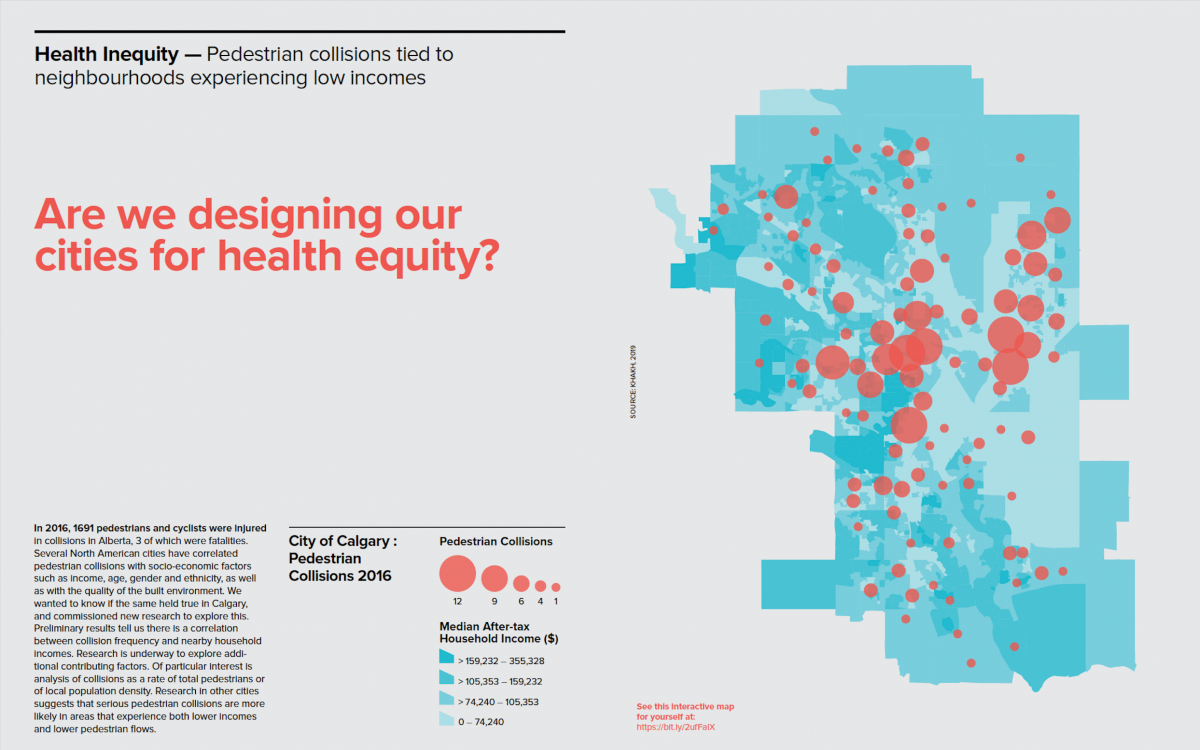Advocate for vulnerable users.
Why advocate for healthy places? We want everyone to experience environments that contribute to health, regardless of socio-economic status, gender, race, or neighbourhood. This resource helps us make the case for further action.
Inspired by research in New Jersey, we commissioned a review of the literature and brand-new GIS research to tell us how pedestrian collisions reflect health inequity in the built environment in Canada.
Walking is the healthiest and most affordable form of transportation. However, inadequate pedestrian infrastructure puts people at a higher risk of collisions, which threatens health directly - by harming those involved - and indirectly - by disincentivising walking.
We pursued this work to contribute to the research that informs policy. If a relationship exists between household income and higher rates of collisions in Canada, it points to a need to prioritize spending towards higher quality infrastructure in neighbourhoods experiencing lower incomes and further investigate why the discrepancy exists.
Preliminary results tell us there is a correlation between collision frequency and nearby household incomes, and that more factors should be explored. Further research on this topic is now underway in the Department of Geography at the University of Calgary - stay tuned for updates!
We presented our results at the 2019 Canadian Association of Road Safety Professionals Conference, which had a Vision Zero theme.


